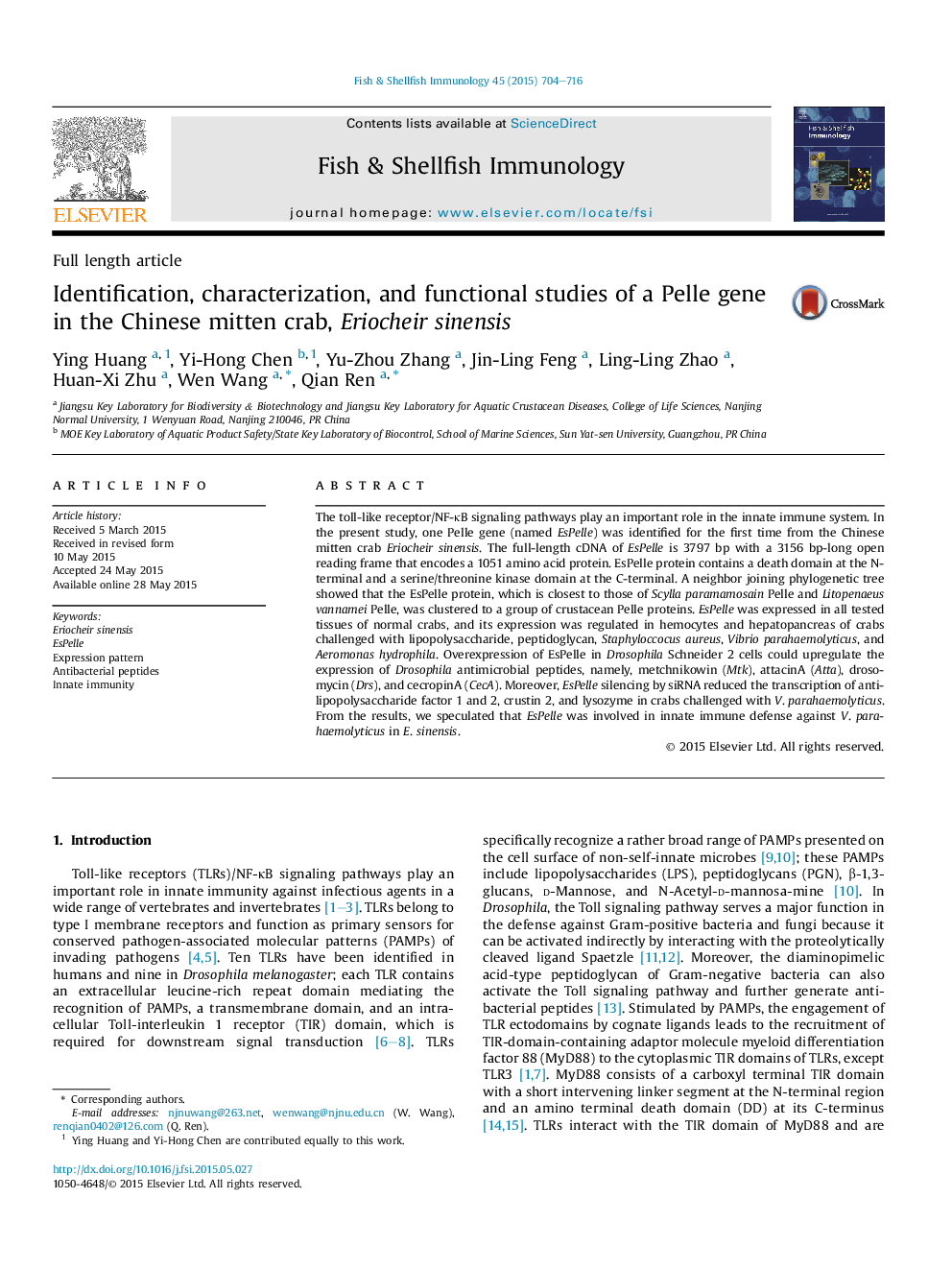| Article ID | Journal | Published Year | Pages | File Type |
|---|---|---|---|---|
| 10971844 | Fish & Shellfish Immunology | 2015 | 13 Pages |
Abstract
The toll-like receptor/NF-κB signaling pathways play an important role in the innate immune system. In the present study, one Pelle gene (named EsPelle) was identified for the first time from the Chinese mitten crab Eriocheir sinensis. The full-length cDNA of EsPelle is 3797 bp with a 3156 bp-long open reading frame that encodes a 1051 amino acid protein. EsPelle protein contains a death domain at the N-terminal and a serine/threonine kinase domain at the C-terminal. A neighbor joining phylogenetic tree showed that the EsPelle protein, which is closest to those of Scylla paramamosain Pelle and Litopenaeus vannamei Pelle, was clustered to a group of crustacean Pelle proteins. EsPelle was expressed in all tested tissues of normal crabs, and its expression was regulated in hemocytes and hepatopancreas of crabs challenged with lipopolysaccharide, peptidoglycan, Staphyloccocus aureus, Vibrio parahaemolyticus, and Aeromonas hydrophila. Overexpression of EsPelle in Drosophila Schneider 2 cells could upregulate the expression of Drosophila antimicrobial peptides, namely, metchnikowin (Mtk), attacinA (Atta), drosomycin (Drs), and cecropinA (CecA). Moreover, EsPelle silencing by siRNA reduced the transcription of anti-lipopolysaccharide factor 1 and 2, crustin 2, and lysozyme in crabs challenged with V. parahaemolyticus. From the results, we speculated that EsPelle was involved in innate immune defense against V. parahaemolyticus in E. sinensis.
Related Topics
Life Sciences
Agricultural and Biological Sciences
Aquatic Science
Authors
Ying Huang, Yi-Hong Chen, Yu-Zhou Zhang, Jin-Ling Feng, Ling-Ling Zhao, Huan-Xi Zhu, Wen Wang, Qian Ren,
